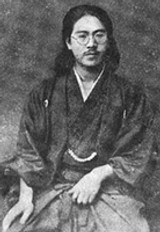“The Last Of The Koga Ryu Ninja”

Seiko Fujita 1898 – 1966,
“The Last Of The Koga Ryu Ninja”

Seiko born as Isamu Fujita, was a Japanese martial artist who was 14th Headmaster or Soke of Kōga-ryūNinjutsu and considered by some to be the last true ninja.
 Isamu Fujita was born in Tokyo, and studied Kōga-ryū Wada Ha (Kōga-ryū Ninjutsu) with his grandfather
Fujita Shintazaemon, 13th Soke of the Kōga-ryū. He studied at Waseda and Meiji Universities,
and after leaving school, worked at a newspaper company. He went on to study
several other martial arts and was also noted as an author, researcher and
collector of ancient scrolls. According to some references, "opinions are
divided as to whether he was a real ninja or a mere budō researcher."
Isamu Fujita was born in Tokyo, and studied Kōga-ryū Wada Ha (Kōga-ryū Ninjutsu) with his grandfather
Fujita Shintazaemon, 13th Soke of the Kōga-ryū. He studied at Waseda and Meiji Universities,
and after leaving school, worked at a newspaper company. He went on to study
several other martial arts and was also noted as an author, researcher and
collector of ancient scrolls. According to some references, "opinions are
divided as to whether he was a real ninja or a mere budō researcher."
There is a living tradition of Ninjutsu taught by Kawakami Jinichi, Hatsumi Masaaki and others. And, in Japan, Fujita Seiko is the most famous of all Ninja. It is said that he was also the heir of Taien-ryu,Jojutsu, Shingetsu-ryu Shuriken-jutsu, Ichiden-ryu Torite-Jutsu as well as Nanban Satto-ryu Kenpo.
 During World War II, Fujita taught
strategy in the Army Academy of Nakano spy school (Rikugun Nakano Gakkō). Fujita later worked as a government security specialist. In
later years he was influential in teaching many traditional Japanese arts.
Notable students include Motokatsu Inoue, Mabuni Kenwa, Fujitani
Masatoshi, actor Tomisaburo Wakayama and Manzo Iwata, who became heir
to some of his styles. Fujita left no heir for Kōga-ryū Wada Ha.
During World War II, Fujita taught
strategy in the Army Academy of Nakano spy school (Rikugun Nakano Gakkō). Fujita later worked as a government security specialist. In
later years he was influential in teaching many traditional Japanese arts.
Notable students include Motokatsu Inoue, Mabuni Kenwa, Fujitani
Masatoshi, actor Tomisaburo Wakayama and Manzo Iwata, who became heir
to some of his styles. Fujita left no heir for Kōga-ryū Wada Ha.
 Fujita Seiko published Zukai
Torinawajutsu showing hundreds of Hojōjutsu ties from many different schools, and several other texts on
ninjutsu and martial arts. He reportedly
acted as managing director of the prestigious Nihon Kobudo Shinkoka and as an
advisor to the Nihon Karate-do Kai.
Fujita Seiko published Zukai
Torinawajutsu showing hundreds of Hojōjutsu ties from many different schools, and several other texts on
ninjutsu and martial arts. He reportedly
acted as managing director of the prestigious Nihon Kobudo Shinkoka and as an
advisor to the Nihon Karate-do Kai.
He died of cirrhosis of the liver at about the age of 68 and likely suffered from hereditary angioedema (which can preclude the practice of martial arts, although Fujita may have demonstrated the ability to overcome some disease symptoms).
Fujita established a collection of classical literature on the traditional martial arts of Japan. He bequeathed this extensive collection to the city of Odawara. This collection, the Fujita Seiko Bunko, is housed at Iga-Ueno Museum, Odawara Castle. It is used by researchers of Budo history.
Fujita continues to be a lightning rod for heated discussions as to whether he was a real Ninja. His response is clear:
…. Not everybody can become a Ninja, as one
would need to possess the necessary qualities. Unfortunately, I haven’t met such a person.
That’s why I am the last Ninja of Koga-ryu….
